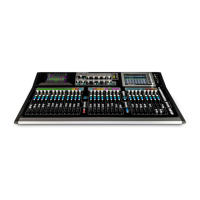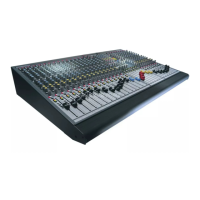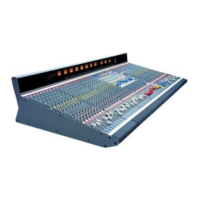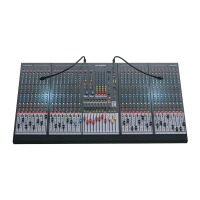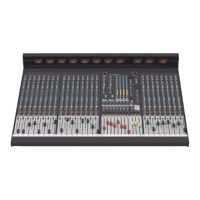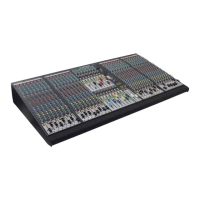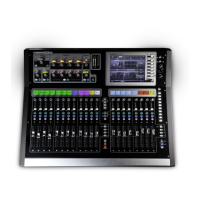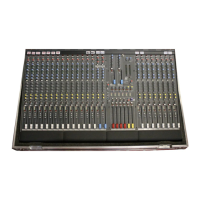L2SM2
ALLEN & HEATH
9
WHEN A FAULT IS SUSPECTED ...
The console is the control centre of the typical audio installation, providing the link between microphones,
instruments and other sound sources, processing devices, amplifiers etc. through a "highway" of interconnecting
cables carrying audio signals, DC power and AC mains voltages. If a problem is reported it is often assumed that
the console is at fault. Our experience has shown that most reported problems are related to faulty cables, equipment
matching and control setting, or faulty external equipment, and not to the console itself which is designed for
continued fault-free performance with no user maintainance. It is usual only to replace worn out electro-mechanical
parts such as faders during the life of the console.
When a problem is reported it is necessary to isolate the location of the fault within the system. Only when tests
have been made to eliminate faults in equipment connected to the console and in the interconnection cables, should
you attempt to repair or report the console as faulty. A TROUBLESHOOTING CHART is included in this manual
to assist you in identifying the more common fault conditions.
Note that only technically competent personnel should attempt service work on this console. Check also the validity
of the manufacturers or selling agents warranty. Always quote the console serial number when reporting a fault.
IDENTIFYING THE FAULT
Fault diagnosis is often carried out remotely by telephone with the user who is often non-technical and needs to be
talked through a series of simple tests to identify the symptoms and locate the problem. These include substitution
of cables and equipment inputs and outputs. If the console is still suspected as faulty it is recommended that all its
audio cables are unplugged and a single known good sound source is patched across the channels to test for correct
operation by monitoring the output through headphones. This often eliminates problems with system earthing and
matching with external equipment.
Faults may be of a permanent or intermittent nature. If intermittent try to induce the symptom by flexing cables,
wiggling connectors, selective mechanical vibration or flexure, and thermal (hot, cold) cycling. Use substitution
of known good circuits to aid identification of the faulty circuit.
SERVICE ACCESS AND PROCEDURES
Access to the internal assemblies is by removal of the base. The power unit may be
removed for service without removing the base first. Individual circuit assemblies may
be lifted for service or removed for replacement. Procedures for base, power unit and
circuit assembly removal follow later in this manual.
Service work is best carried out with the console inverted on a clean work surface
suitably covered to protect the console cosmetics. Ensure adequate lighting. Remove
all debris such as solder, component legs and wire clippings from inside the console,
and check your work carefully before replacing the base. Test for correct operation.
If the console is to be sent by carrier we advise that you check the packing for suitability
first. Use the purpose designed ALLEN & HEATH packing if it is still intact. This
packing is illustrated here for reference.
PRECAUTIONS
l Check the console for correct mains voltage connection before switching on.
l Disconnect the mains input before removing the base or power unit. Apply caution
when testing the console or power unit with base removed.
l Handle the console and its internal assemblies with care to avoid damage to the
components or cosmetics. Do not lift or balance the panel on the circuit assemblies
with the base removed.
l Do not plug or unplug the internal IDC connectors with power applied.
l Check the connectors for correct alignment and seating.
l If replacing or removing the power unit, check the console DC harness wiring for
correct connection to the power unit circuit board.
l Check the copper wire earth busbar for correct solder connection to all the circuit
boards.
l Use a good small tip soldering iron for circuit board work to avoid track or pad
damage.
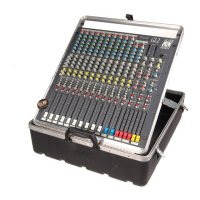
